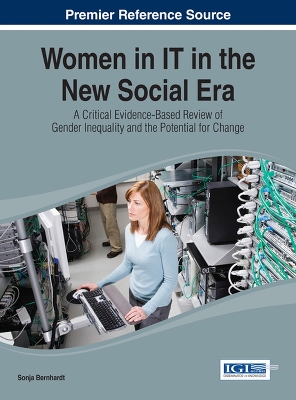Advances in Human and Social Aspects of Technology
3 total works
Research and statistics support the view that current programs are failing to keep women in the ICT field. Currently, there exist very few solutions to this growing problem. Women in IT in the New Social Era: A Critical Evidence-Based Review of Gender Inequality and the Potential for Change aims to bring this topic to the forefront of discussion about what can be done to correct this lopsided gender distribution. This reference work will be an essential guide for government professionals, students, and researchers in the ICT field looking to develop a solution to equalize the retention rate of women in these related fields.
Gender Inequality and the Potential for Change in Technology Fields
by Sonja Bernhardt, Patrice Braun, and Jane Thomason
Published 30 October 2018
Over the last few decades, the refrain for many activists in technology fields around the globe has been ""attraction, promotion, and retention."" Yet the secret to accomplishing this task has not been found. Despite the wide variety of theories proposed in efforts to frame and understand the issues, to date none have been accepted as a universally accurate framework, nor been applicable across varying cultures and ethnicities.
Gender Inequality and the Potential for Change in Technology Fields provides innovative insights into diversity creation through potential solutions, including the attraction of more women to study technology and to enter technology careers, the navigation of suitable promotional pathways, and the retention of women in these industries. This publication examines women in IT professions, artificial intelligence, and social media. It is designed for gender theorists, government officials, policymakers, educators, individual activists and advocates, recruiters, content developers, managers, women and men in technology fields, academicians, researchers, and students.
Gender Inequality and the Potential for Change in Technology Fields provides innovative insights into diversity creation through potential solutions, including the attraction of more women to study technology and to enter technology careers, the navigation of suitable promotional pathways, and the retention of women in these industries. This publication examines women in IT professions, artificial intelligence, and social media. It is designed for gender theorists, government officials, policymakers, educators, individual activists and advocates, recruiters, content developers, managers, women and men in technology fields, academicians, researchers, and students.
Research and statistics support the view that current programmes are failing to keep women in the ICT field. Currently, there exist very few solutions to this growing problem.
Women in IT in the New Social Era: A Critical Evidence-Based Review of Gender Inequality and the Potential for Change aims to bring this topic to the forefront of discussion about what can be done to correct this lopsided gender distribution. This reference work will be an essential guide for government professionals, students, and researchers in the ICT field looking to develop a solution to equalise the retention rate of women in these related fields.
Women in IT in the New Social Era: A Critical Evidence-Based Review of Gender Inequality and the Potential for Change aims to bring this topic to the forefront of discussion about what can be done to correct this lopsided gender distribution. This reference work will be an essential guide for government professionals, students, and researchers in the ICT field looking to develop a solution to equalise the retention rate of women in these related fields.

